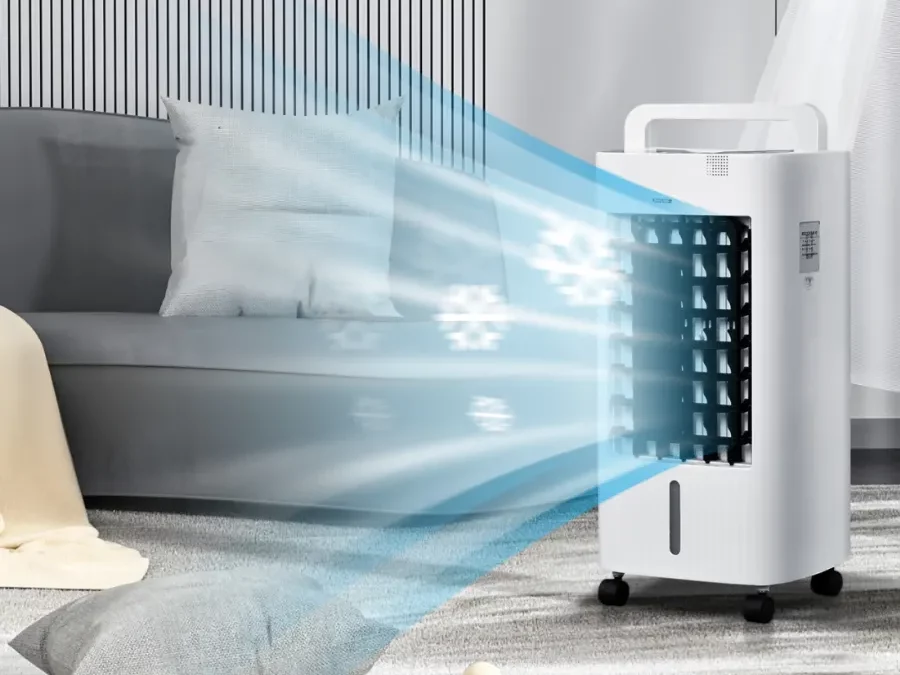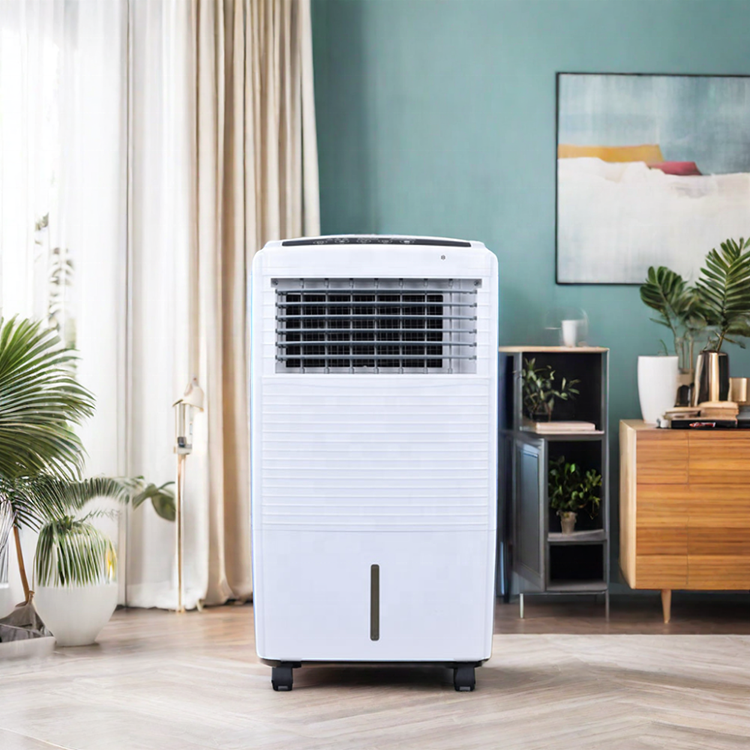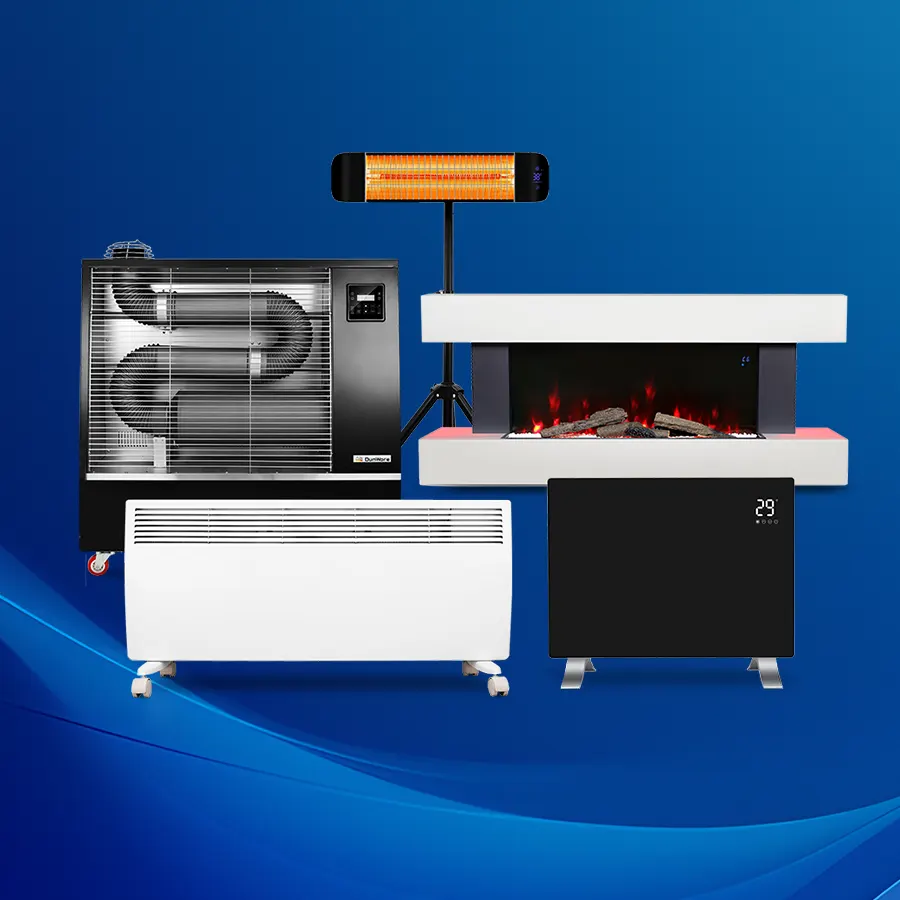Picture this: the summer sun is blazing, temperatures are climbing, and you’re stuck inside, feeling like you’re melting into your chair. Sounds familiar? 운 좋게, there’s a hero in this tale—the air cooler! This nifty device swoops in to save the day by transforming hot, stuffy rooms into refreshing havens. But how does an air cooler work, exactly? Let’s unravel the mysteries behind this cooling companion, exploring air cooler components, the science at play, and practical tips for using it effectively.
The Basics of Air Cooler

공기 냉각기 란 무엇입니까??
At its heart, an air cooler is a simple yet effective appliance designed to cool the air using a process called evaporation. Unlike traditional air conditioners that rely on refrigerants and complex machinery, air coolers harness the power of nature to provide a refreshing breeze for households, industry, 그리고 commercial scenarios. They’re particularly useful in dry climates, where low humidity can amplify the sweltering heat. When the temperature soars, these devices can help you maintain a comfortable environment without breaking the bank or harming the planet.
Components of an Air Cooler
To understand how an air cooler works, let’s take a closer look at its essential components:
- Fan: Think of the fan as the heart of the cooler. It draws in warm air from your surroundings, setting the stage for cooling. The fan’s speed can often be adjusted, allowing you to customize your cooling experience.
- Water Reservoir: This is where the cooling magic begins. The reservoir holds water, which is crucial for the evaporation process. A larger reservoir means less frequent refilling, a convenience you’ll appreciate during hot days.
- Cooling Pads: These pads are the real MVPs of the cooling process. Made from absorbent material, they soak up water from the reservoir. As air passes through the pads, it cools down significantly. Think of these pads as sponges soaking up moisture, ready to transform your hot air into a refreshing breeze.
- Pump: The pump circulates water from the reservoir to the cooling pads. It ensures that the pads remain moist and effective, providing continuous cooling as long as there’s water in the tank.
The Science Behind Air Cooling
Now that we’ve covered the air cooler components, let’s dive into the science. So, how does an air cooler work? The answer lies in the fascinating process of evaporation. When warm air enters the cooler and passes over the wet cooling pads, the heat from the air causes the water in the pads to evaporate. This process absorbs heat, resulting in cooler air being blown back into your room. Imagine stepping out of a swimming pool on a hot day—the sensation of coolness as the water evaporates off your skin. That’s the same principle at work!
How Does an Air Cooler Work: Step-by-Step
1. Air Intake Process
The first step in the cooling process is the air intake. When you turn on the air cooler, the fan draws in hot air from the room. This initial step is crucial because the quality of the air entering the cooler affects the overall cooling efficiency.
2. Water Absorption by Cooling Pads
다음, the warm air hits the cooling pads, which are soaked with water. As the air passes through, the pads absorb heat and begin to cool down. This absorption is key to how effectively the air cooler can reduce the temperature of the air.
3. Air Circulation and Cooling
As the warm air continues to flow through the wet pads, it cools significantly. The moisture evaporates, pulling heat away from the air. This creates a lovely breeze that feels refreshing against your skin.
4. Exhaust of Cool Air into the Room
마지막으로, the fan pushes the now-cool air out of the unit, filling your space with a delightful, refreshing breeze. It’s like having a cool, gentle wind blowing through your home, making even the hottest days more bearable.
How to Use an Air Cooler With Water?
Using an air cooler with water is a breeze! Here’s how to make the most of your device:
- Fill the Water Reservoir: Start by filling the water reservoir with clean water. Depending on the model, this might be a straightforward task or involve some tricky angles. Just make sure you don’t overfill it!
- Ensure Cooling Pads Are Moist: Check that the cooling pads are adequately wet. If they seem dry, let the water circulate for a bit before turning on the cooler.
- Adjust the Fan Speed: Most air coolers allow you to adjust the fan speed. Higher speeds can create a stronger breeze, while lower speeds are perfect for a gentle flow.
- Enjoy the Cool Air: Turn on the cooler and let it work its magic. Sit back, relax, and enjoy the refreshing air filling your room!
How to Use an Air Cooler Without Water?
What if the water reservoir is empty, or you simply want to use your air cooler as a fan? It’s easy! Just switch it on without adding water. While it won’t cool the air, it will help circulate it, making the space feel less stuffy and more comfortable. It’s a good option for those mild days when you just need a little airflow.
Pros and Cons of Using Air Coolers

Pros of Using Air Coolers
- 에너지 효율성: One of the biggest air cooler benefits is their energy efficiency. They consume significantly less electricity compared to traditional air conditioning units. This means lower energy bills, and who doesn’t love that?
- Eco-Friendliness: Air coolers use water for cooling, which makes them an environmentally friendly option. No harmful refrigerants are involved, and they have a lower carbon footprint compared to ACs.
- Cost-Effectiveness: 일반적으로, air coolers are more affordable to purchase and maintain. 을 더한, with their lower energy consumption, you’ll save money in the long run.
Cons of Using Air Coolers
- Limitations of Air Coolers: While air coolers can be quite effective, they have their limitations. They work best in dry, low-humidity environments. If you live in a humid climate, you might find their cooling capabilities somewhat lacking.
- Dependence on Humidity Levels: If the humidity level is too high, the air cooler’s efficiency decreases. Instead of feeling cool and refreshed, you might feel sticky and uncomfortable.
- Cooling Range Limitations: Air coolers are designed for smaller areas. If you have a large space, you may need multiple units to achieve effective cooling.
Tips for Optimal Use of an Air Cooler
- Positioning: Place the cooler near open windows or doors to maximize airflow and enhance the cooling effect.
- Keep It Filled: Regularly check and refill the water reservoir to ensure consistent cooling performance.
- Maintain Cooling Pads: Clean or replace cooling pads as needed to prevent mold and ensure efficient cooling.
- Use Ice or Frozen Bottles: For an extra chill, add ice or frozen water bottles to the water reservoir.
- Close Windows and Doors: When the cooler is running, keep windows and doors closed to maintain a cooler environment.
- Adjust Fan Speed: Experiment with different fan speeds to find the most comfortable airflow for your space.
- 정기점검: Clean the unit regularly to prevent dust buildup and ensure optimal operation.
- Consider Humidity: Use the cooler in dry environments for the best results, as high humidity can reduce its effectiveness.
결론
Now you’re equipped with the knowledge of how an air cooler works! From the basic components to the science behind the cooling process, it’s clear that these devices offer an eco-friendly, cost-effective solution to beating the heat. Whether you’re lounging at home or working in a stuffy office, an air cooler can be a game-changer, especially in dry climates. So next time the temperatures rise, consider this refreshing alternative to traditional air conditioning.
자주 묻는 질문
- Which type of air cooler is best for humid climates? If you’re in a humid area, look for air coolers with a dehumidifying feature or choose a model designed for high humidity levels, like a swamp cooler.
- How often should I change the cooling pads? It’s advisable to change the cooling pads every 1-3 months, depending on how frequently you use your air cooler and the water quality in your area.
- Does air cooler consume more electricity than AC? 아니요, air coolers are much more energy-efficient, consuming significantly less electricity than traditional air conditioning units, making them an economical choice.
- What are the best places to use an air cooler? Air coolers are perfect for dry, well-ventilated spaces like living rooms, 안뜰, or bedrooms. They work best in areas with low humidity.
- Which type of air cooler is best for home? A tower or window air cooler is often best for home use, depending on the size of your space and your cooling needs.





















